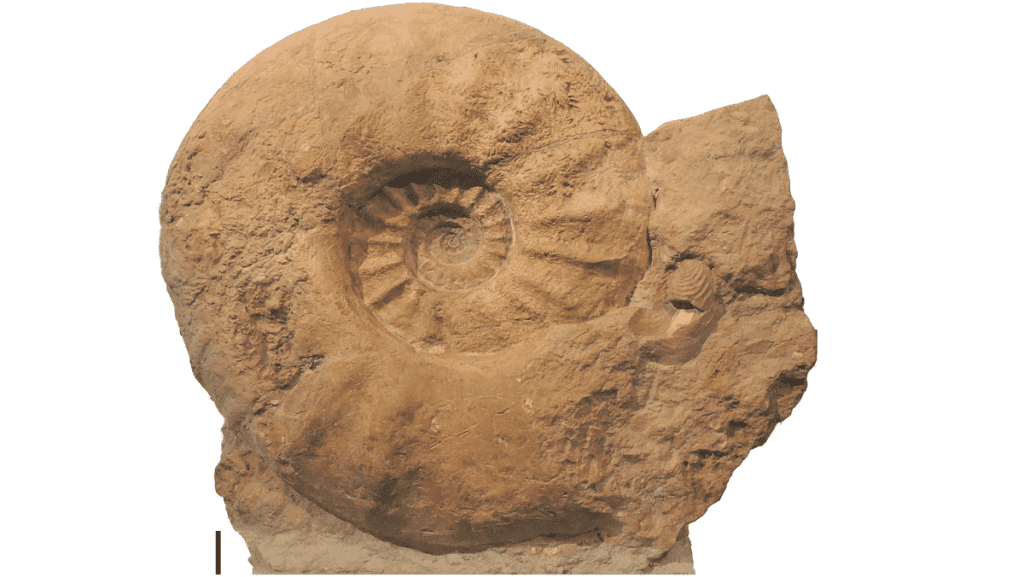Ammonites, the infamous coil-shaped mollusks of Earth’s ancient seas, could grow to incredible sizes. New research found that their predators were the likeliest driver of the ammonites’ growth.

An international team of researchers with members from Germany, Mexico, and the U.K is peering into the evolutionary history of ammonites. They focused their efforts on two related, but visually distinct species: The approach by the team was to first learn more about ammonites in general—to that end they collected 154 specimens from various institutions, all of which were of two species: Parapuzosia leptophylla and Parapuzosia seppenradensis.
Although closely related, there is a huge size difference between the members of these two species. According to the research, the root cause of this difference was pressure applied by predators.
Growing into it
Ammonites are a group of extinct mollusks that are well known for their distinctive coil-shaped shells with frilled suture lines. In general, they were quite small animals, averaging around half a meter (around 1.5 ft) in diameter.
However, one species definitely stands out, size-wise, among this group — Parapuzosia seppenradensis. Individuals of this species could grow very large for an ammonite, up to 1.5 or even 1.8 meters (5 to 6 ft) in diameter.
Up to know, their huge size remained more of a curiosity, one whose causes were poorly understood. In order to get to the bottom of things, however, the team compared a large sample of P. seppenradensis fossils to those of a closely-related species, P. leptophylla.
They report that although the former evolved from the latter after a group of P. leptophylla moved away from their traditional range — the coastlines of today’s western Europe — to new waters, corresponding to today’s Americas.
P. seppenradensis individuals became progressively larger after this shift in location, the team explains. While there are no immediately-obvious causes for this change, no climactic shifts or ecological upheavals, the authors note that mososaurs also began getting bigger at around the same time.
Mosasaurs were giant marine reptiles that lived around the same time as ammonites and were believed to be their main predators.
The researchers’ theory is that P. seppenradensis evolved to grow to larger sizes as smaller individuals were more readily captured by mososaurs. Over time, this would naturally select the group in favor of larger body sizes. However, this shift also started applying pressure on the mososaurs; larger individuals would be better able to hunt the larger ammonites. In turn, this selected the species in favor of larger size.
In other words, it’s possible that we’re seeing a curious case of predator and prey involved in an evolutionary arms race with each other, each driving the other to achieve ever-greater body sizes.
One element that the team admits they cannot explain is that prior research has shown that mososaurs continued growing even after P. seppenradensis reached their maximum size. Furthermore, P. seppenradensis eventually started to revert back to smaller proportions for reasons unknown.
The paper “Ontogeny, evolution and palaeogeographic distribution of the world’s largest ammonite Parapuzosia (P.) seppenradensis (Landois, 1895)” has been published in the journal PLOS One.





